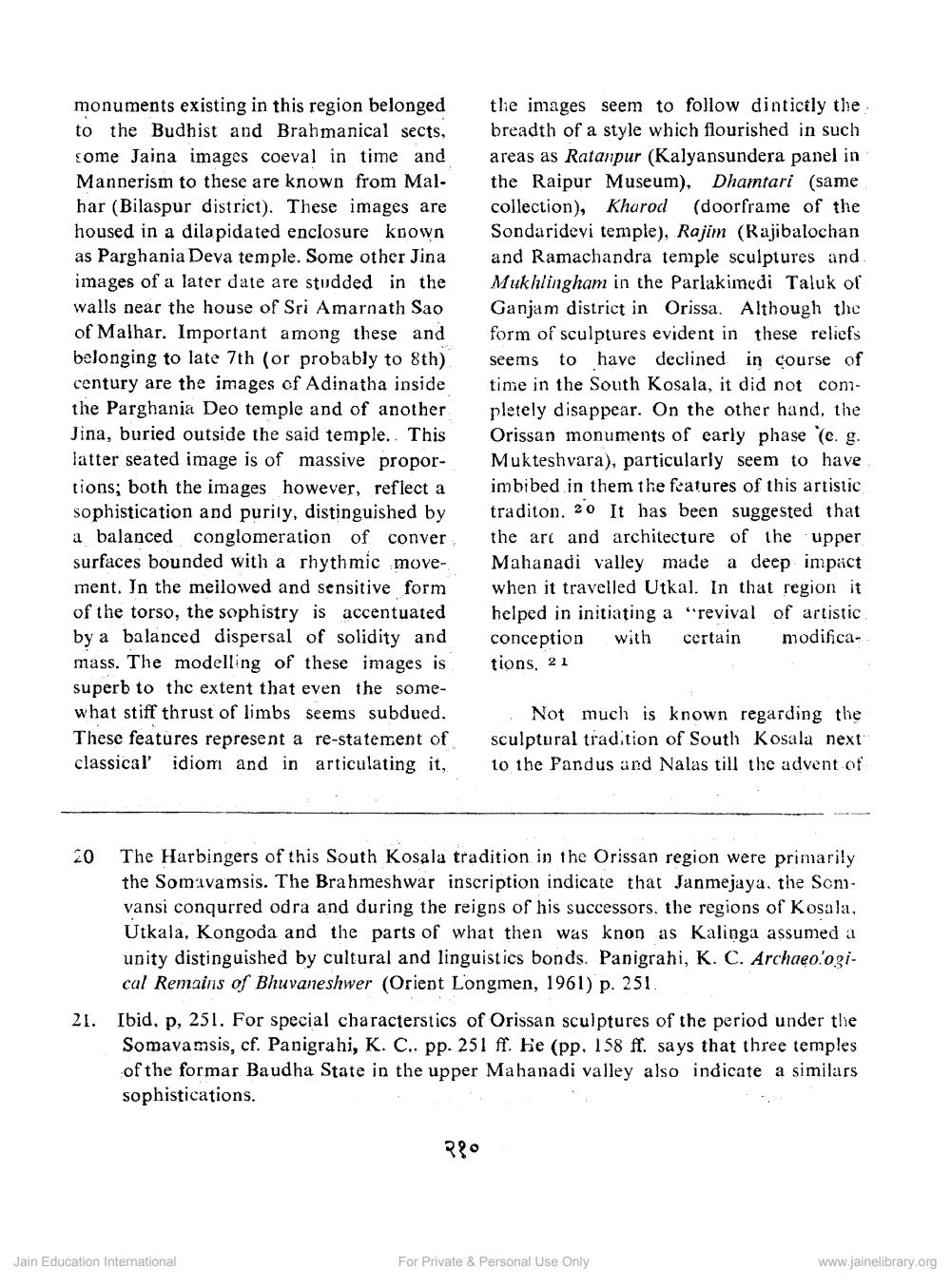________________
monuments existing in this region belonged to the Budhist and Brahmanical sects, some Jaina images coeval in time and Mannerism to these are known from Malhar (Bilaspur district). These images are housed in a dilapidated enclosure koown as Parghania Deva temple. Some other Jina images of a later date are studded in the walls near the house of Sri Amarnath Sao of Malhar. Important among these and belonging to late 7th (or probably to 8th) century are the images of Adinatha inside the Parghania Deo temple and of another Jina, buried outside the said temple. This latter seated image is of massive proportions; both the images however, reflect a sophistication and purity, distinguished by a balanced conglomeration of conver surfaces bounded with a rhythmic move ment. In the meilowed and sensitive form of the torso, the sophistry is accentuated by a balanced dispersal of solidity and mass. The modelling of these images is superb to the extent that even the somewhat stiff thrust of limbs seems subdued. These features represent a re-statement of classical' idiom and in articulating it
the images seem to follow dintictly the breadth of a style which flourished in such areas as Ratanpur (Kalyansundera panel in the Raipur Museum), Dhamtari (same collection), Kharod (doorframe of the Sondaridevi temple), Rajim (Rajibalochan and Ramachandra temple sculptures and Mukhlingham in the Parlakimedi Taluk of Ganjam district in Orissa. Although the form of sculptures evident in these reliefs seems to have declined in course of time in the South Kosala, it did not conpletely disappear. On the other hand, the Orissan monuments of early phase (e. g. Mukteshvara), particularly seem to have imbibed in them the features of this artistic traditon. 20 It has been suggested that the art and architecture of the upper Mahanadi valley made a deep impact when it travelled Utkal. In that region it helped in initiating a "revival of artistic conception with certain modifications, 21
Not much is known regarding the sculptural tradition of South Kosala next to the Pandus and Nalas till the advent of
20
The Harbingers of this South Kosala tradition in the Orissan region were primarily the Somuvamsis. The Brahmeshwar inscription indicate that Janmejaya, the Scmvansi conqurred odra and during the reigns of his successors, the regions of Kosala, Utkala, Kongoda and the parts of what then was knon as Kalinga assumed a unity distinguished by cultural and linguistics bonds. Panigrahi, K. C. Archaeo.'ogical Remains of Bhuvaneshwer (Orient Longmen, 1961) p. 251. Ibid, p, 251. For special characterstics of Orissan sculptures of the period under the Somavamsis, cf. Panigrahi, K. C.. pp. 251 ff. be (pp. 158 ff. says that three temples of the formar Baudha State in the upper Mahanadi valley also indicate a similars sophistications.
21.
२१०
Jain Education International
For Private & Personal Use Only
www.jainelibrary.org




